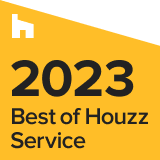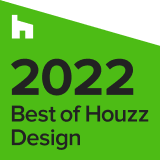CREATIVE BRIEF – MAY – LEED/SUSTAINABLE DESIGN Q&A:
What made you decide to become LEED accredited? I decided to become LEED accredited because I had lived in Europe for 10 years – and they were way ahead of the game in terms of “green” environments and passive design. So I was exposed to it at a fairly early age – Europeans recognized the need to minimize and reduce the ecological footprint.
As issues like global warming have become a real and immediate threat, the necessity to reduce our impact on the environment around us has become extremely important. This is also evidenced within the last 10 years with regards to energy consumption – and new and innovative sources of energy such as biofuels, wind power, solar power, and use of electric cars. Clean, green energy is necessary to reduce our impact on the environment.
What defines a LEED certified building/residence? There are 4 categories of LEED certification starting with the lowest 1) Certified, 2) Silver, 3) Gold and 4) Platinum. The different categories correlate to the amount of systems and elements in place to reduce the potential environmental impact.A building earns points for meeting green building standards in six categories:
- Sustainable site
- Water conservation
- Energy and atmosphere
- Materials and resources
- Indoor environmental quality
- Green design innovations
The LEED performance credit system aims to allocate points “based on the potential environmental impacts and human benefits of each credit.” These are weighed using the environmental impact categories of the USEPA’s Tools for the Reduction and Assessment of Chemical and Other Environmental Impacts and the environmental-impact weighting scheme developed by the National Institute of Standards and Technology (NIST).
The building must comply with environmental laws and regulations, occupancy scenarios, building permanence and pre-rating completion, site boundaries and area-to-site ratios. The building owner must share data on the building’s energy and water use for five years after occupancy (for new construction)
What role does the designer play in creating a LEED certified project? The designer plays a very important role in creating a LEED certified project, as they are usually responsible for the selection of materials and finishes, lighting, flooring, paint, and sometimes involved in the selection of HVAC, solar energy systems, solar water, etc. LED lighting is becoming more widespread – the initial investment cost is higher but lasts longer – so the investment is weighed against the long-term benefits. More and more people are utilizing LED lighting, and costs to make this conversion have come down as a result. Flooring selections can reduce off-gassing and air quality, and paint which contain low VOC emissions also increases the air quality. Environmental flooring selections include bamboo, wool carpeting, cork, and linoleum. There was a recent scare in Phoenix which involved Lumber Liquidators importing inexpensive wood flooring from China which had high fomeldyhyde levels – it actually was a good thing for people to hear about this. It is completely necessary to create an environment in your home which is healthier for you – there is a high incidence of cancer in present days – which is a direct result of toxins around us.
What is the biggest misperception of LEED accreditations and/or LEED certified buildings? The biggest misperception of LEED accreditation is that it will cost too much to implement long-term energy strategies. There are many different levels of LEED certification – and even doing the lowest (Certified) level – will bring many long-terms benefits and savings in energy reduction and reducing our ecological footprint. Even doing something small will have an impact on the community. Previously, residential projects feared the cost of certification was too great, and the products they were considering cost too much – it has been easier to see the long-term impact on commercial buildings rather than residential buildings. However, the residential owner can implement solar systems, use “passive” systems like thermal windows and doors, LED lighting, utilize flooring which does not contain formaldehyde, etc. which bring about healthier environments or save on energy. More and more people are aware of this today, and costs are coming down as a result.I have been involved for a long time with Habitat for Humanity, and when I lived in Park City, I was on the Habitat board. The first Habitat housing was being proposed and constructed in Park City, and I knew the project had to be special and unique in order to coexist with the well-heeled neighbors. I pushed for the Habitat housing to go LEED and it now exists. Everyone in the community is proud of their LEED Habitat. It is a great promotion for “green” housing – as the general population would be encouraged by a Habitat home being LEED certified – as Habitat homes are generally considered less expensive than other homes.
What makes a product LEED eligible? There are several qualities and considerations which make a product LEED eligible – one is conservation of energy, conservation of water, recycling content, and reducing toxins in the environment. Low emission of VOC levels such as in paint, and low or little off-gassing of toxins in building materials contributes to better indoor air quality. Using Energy star appliances reduces energy costs and utilize more efficient use of energy – this contributes to LEED eligibility. Using products which are within a 500 mile radius of the project contributes to LEED eligibility (in other words, buy local whenever possible). Products which utilize more than 20% of recycled post-industrial waste make a product LEED eligible. Cleaning and sanitation products that biodegrade fully and harmlessly in the environment ensure that water resources are not impacted by the use of the product.
LED bulbs contribute to LEED eligibility because they last 15 times longer than a normal bulb and use at least 75% less energy which makes it more efficient. It has no warm-up time, which means it turns on instantly. It produces a lot less heat.
How do LEED eligible products compare with non-LEED eligible products with regards to price, lead time, etc? LEED eligible products in general are more expensive than non-LEED eligible products. However, there is not really a price that can be put on a cleaner environment and reducing the carbon footprint for the next generation, or on energy-efficiency and conserving energy. LEED eligible products are generally a longer-term investment, and the investment pays off over time.Lead times for LEED products vs. non-LEED products can be very similar if one is dealing with a company which specializes in production of products which are environmentally conscious.
Are there specific product brands that are on the forefront of LEED eligibility? Corian @ Dupont, Armstrong and 3Form are specific product brands which are at the forefront of LEED eligibility.
Corian has been one of the leading brands to utilize recycled content and also has low emissions. It is very affordable in terms of and is readily available to the final consumer at locations such as Home Depot and Lowes. Armstrong carries a wide range of bamboo flooring, linoleum, FSC-certified, reclaimed wood and flooring which contains recycled content flooring (a minimum of 25% post-consumer content) LG has been a leader in field for Energystar washing machines and televisions. Bosch has been a leader in Energystar dishwashers and refrigerators for years3 Form is a very forward-thinking company – their vision and mission is a “path to zero” – where there is zero imprint on the environment. They make types of products which are used in homes and buildings which satisfy LEED requirements.
Are you seeing a growing demand for environmentally sustainable practices and products? If so, do you anticipate this growth to continue? I totally see a growing demand for environmentally sustainable practices and products from consumers and clients. I am amazed at the amount of times I encounter clients who are putting in solar panels, solar water, light tubes to conserve on electricity, and the amount of clients who are converting to LED bulbs for electricity. Many clients are utilizing bamboo and cork, and quite a few are starting to use Corian rather than granite. There is a need for designers to be well-educated on the various types of products which will meet the growing demand for sustainable products. I would expect this growth to continue – and think of the times not so long ago where the final consumer was not as educated as they are now. I think each individual is more aware of the need to leave the world a better place for the generation which comes after. If each person does something, albeit something small, then we are on are way to reducing our footprint – and reducing the toxicity of our immediate environment.












